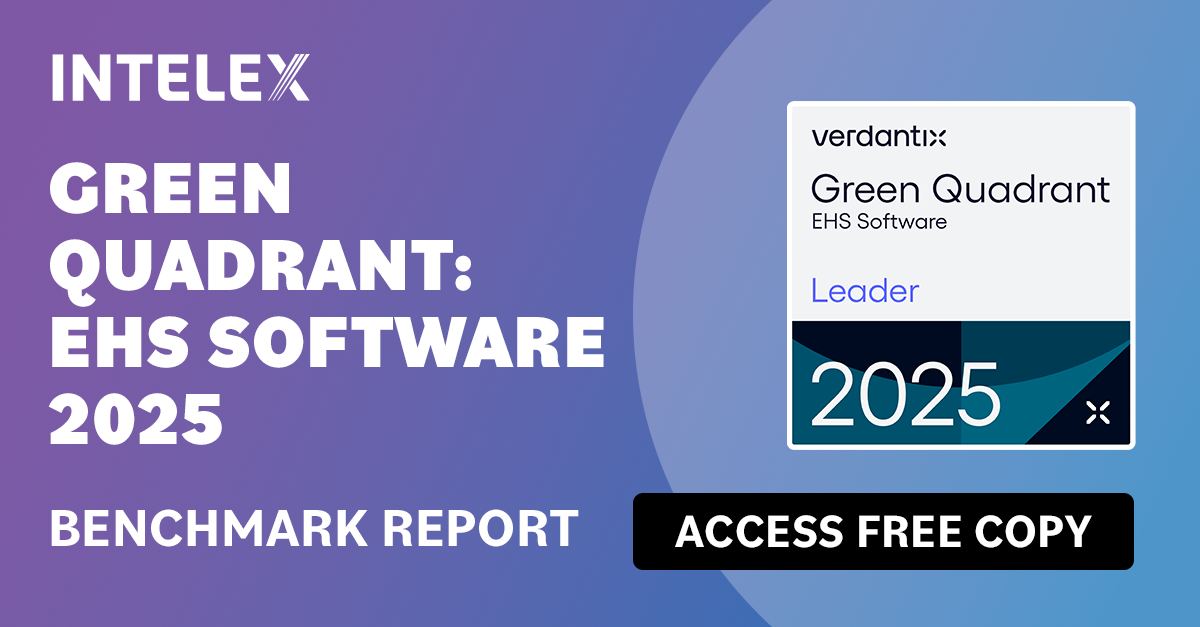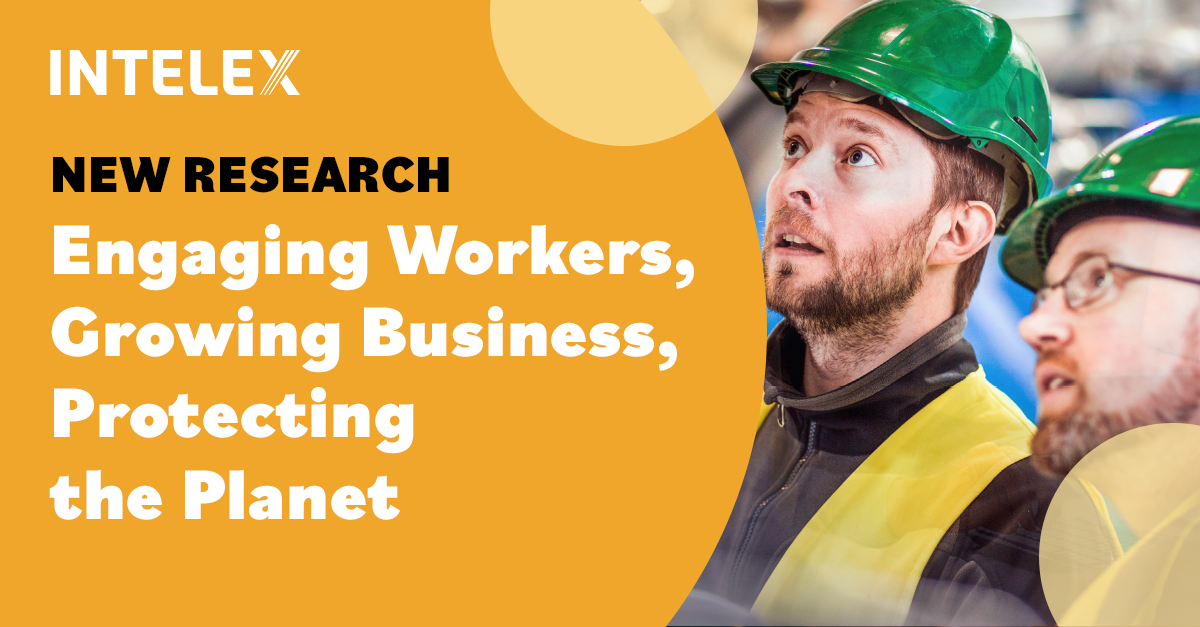How to Show Finance the Value of EHS Tech Using Soft ROI
October 22, 2025
10 minute read

Imagine this: You’ve just finished laying out the benefits of EHS software to your leadership team. You’re feeling confident. You’ve demonstrated how it can lead to improved safety outcomes and foster a stronger culture.
Then the CFO leans forward and asks the question you were dreading: “What’s the ROI?”
It’s a hard question to answer. And not because there isn’t value — there’s tons of it.
But, most of it lives in the soft ROI column: the improvements that help an organization become more effective, resilient, and competitive over time.
EHS professionals intuitively understand that EHS software can transform how their organizations manage risk.
But when it comes to securing budget, intuition isn’t enough.
Financial leaders need a clear case for value — and that’s where many EHS professionals get stuck. The challenge isn’t that ROI is missing, but that it doesn’t always show up on a spreadsheet.
In my experience working with EHS practitioners across various industries, I’ve found that the most successful business cases don’t ignore soft ROI; they embrace it. They help stakeholders understand that the true value of EHS software extends far beyond simple cost reduction. In this article, I’ll outline key strategies that have helped EHS professionals effectively communicate the soft ROI of EHS technology to their stakeholders.
Understanding the stakeholder perspective
Before we dive into specific strategies, it’s important to recognize fundamental challenge: our stakeholders often don’t perceive the problems we’re facing.
Stakeholders see our completed work — the completed audits, closed incidents, and submitted reports — but not the inefficiency behind the scenes. They don’t have to spend hours tracking info across systems or compiling data from scattered spreadsheets.
This visibility gap is why soft ROI matters. While stakeholders may not immediately grasp the monetary value of eliminating these inefficiencies, they can understand the strategic value of having their EHS team focused on high-impact work rather than administrative burden.
Strategy 1: Paint the picture of your current reality
To make a strong case for soft ROI, start by showing stakeholders the problems they might not notice. Don’t assume stakeholders know your daily challenges. Instead, show them how your EHS process works today and why change is needed.
Show them “a day in the life”
One of the most powerful techniques for communicating soft ROI is to walk stakeholders through a detailed “day in the life” scenario.
If inefficiencies are a major pain point, walk stakeholders through what it takes to complete a single business process — be it an audit, incident investigation, or inspection.
In this walkthrough, make sure to outline:
- Every system you must access to complete the process
- All the people you need to manually notify or follow up with
- The different locations where information is stored
- The redundant data entry required across systems
- The time spent searching for historical records or documentation
- The manual compilation required to generate reports
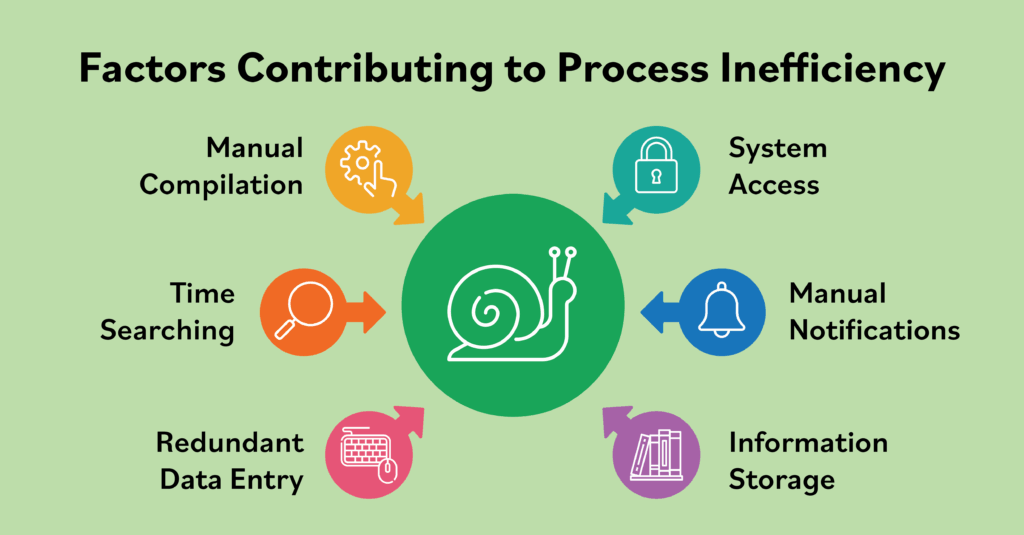
When stakeholders understand everything involved in these basic EHS tasks, the benefits of bringing systems together and automating become clear. Soft ROI isn’t just about saving time. It also reduces stress, mistakes, and missed information.
Focus on the three major pain points
As you describe a typical day, you’ll likely find many issues that technology could help fix. It can be tempting to list them all.
However, it is important to focus on and clearly articulate the three most significant problems driving your search for a technology partner. Especially those where solving them will have the most noticeable impact for your organization.
For each problem, outline how an EHS software platform can address it.
Be specific about the connection between the problem and the solution. For example, if one of your major pain points is the inability to track corrective actions to closure, explain how a centralized EHS platform with automated notifications and workflow management would ensure accountability and prevent repeat incidents.
Strategy 2: Articulate the opportunity cost
EHS professionals often spend a lot of time on difficult administrative tasks, while also being expected to lead improvement efforts. This creates a real challenge: every hour spent on paperwork is an hour not spent on important, strategic work.
Reframe the conversation around strategic capacity
Help your stakeholders understand what your team could accomplish with better tools. Outline specifically where you could redirect your time and energy if you were able to automate and organize your administrative burdens. Would you be able to:
- Spend more time in the field building rapport with the workforce to drive safety culture?
- Analyze trends across your EHS data to drive more informed decision-making?
- Partner with operations leaders to integrate safety into operational planning?
- Develop more robust emergency response and business continuity programs?
Shifting focus is helpful because it moves stakeholders from problem-solving to seeing new possibilities. Stakeholders may accept a certain level of inefficiency as the cost of doing business, but they’re much more interested in hearing about unrealized potential.
When you show how technology can let your team focus on work that strengthens the organization and reduces risk, you’re speaking the language of strategic value.
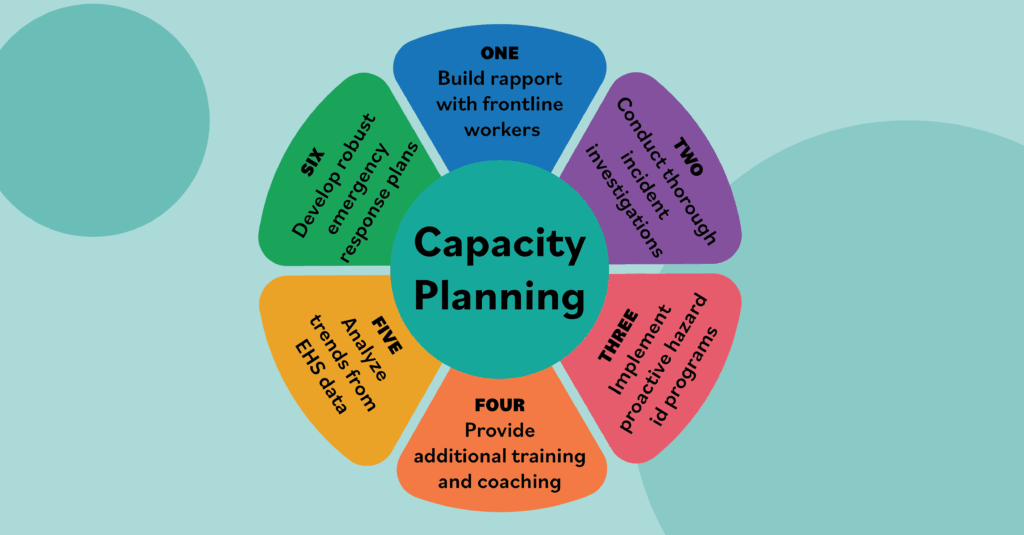
Detail the organizational impact
Take this one step further by explaining how this shift in focus would impact the broader organization. Would more strategic EHS work result in:
- Reduced insurance premiums through improved safety performance?
- Enhanced reputation and competitive advantage in bidding for contracts?
- Improved employee retention and engagement through a stronger safety culture?
These benefits show soft ROI extends beyond EHS. Stakeholders see EHS software as enterprise-wide value, rather than a cost center.
Strategy 3: Address compliance visibility and risk
When EHS teams use manual or fragmented processes, it’s hard to clearly see how well they are meeting compliance requirements. This lack of visibility creates organizational risk that may not be immediately apparent to stakeholders until an audit failure or regulatory violation brings it into sharp focus.
Illuminate the hidden compliance risks
When building your soft ROI case, outline the specific compliance challenges that your current systems and processes create. Help stakeholders understand that compliance isn’t just about avoiding fines, it’s about:
- Demonstrating due diligence in the event of an incident or regulatory inspection
- Maintaining the certifications and permits necessary to operate your facilities
- Protecting the organization’s reputation and social license to operate
- Reducing executive liability and personal risk for leadership
- Ensuring business continuity by avoiding operational shutdowns
EHS software helps by creating a single place to keep records, so nothing gets missed.
- Automated reminders help make sure inspections and audits happen on time.
- Digital workflows ensure proper approvals and documentation.
- Audit trails give you solid records of your compliance work.
It might be hard to put a dollar value on these features, but their importance is clear when you talk about what can go wrong without them.
Connect past issues to future prevention
Whenever possible, use specific examples to illustrate these risks.
- Has your organization experienced compliance issues in the past due to process inefficiencies?
- Was there an incident where the lack of corrective action management led to a repeat occurrence?
- Did you ever face challenges during a regulatory audit because records were scattered across multiple systems?
These concrete examples show stakeholders that the soft ROI of better compliance management is really about risk avoidance. The value isn’t just in what the software helps you achieve, but also from what it helps you avoid.
Strategy 4: Highlight cross-functional benefits
One question that often strengthens a business case is: “How can this help others?”
When evaluating EHS software, consider whether there’s an opportunity for other departments to leverage the platform to drive standardization and improvement across the organization.
EHS software platforms, such as Intelex, include capabilities that extend beyond traditional EHS use cases. Quality management, operational excellence teams, facility management, and even human resources and marketing may benefit from the same kinds of workflow automation, data management, and reporting capabilities that attracted you to the platform.
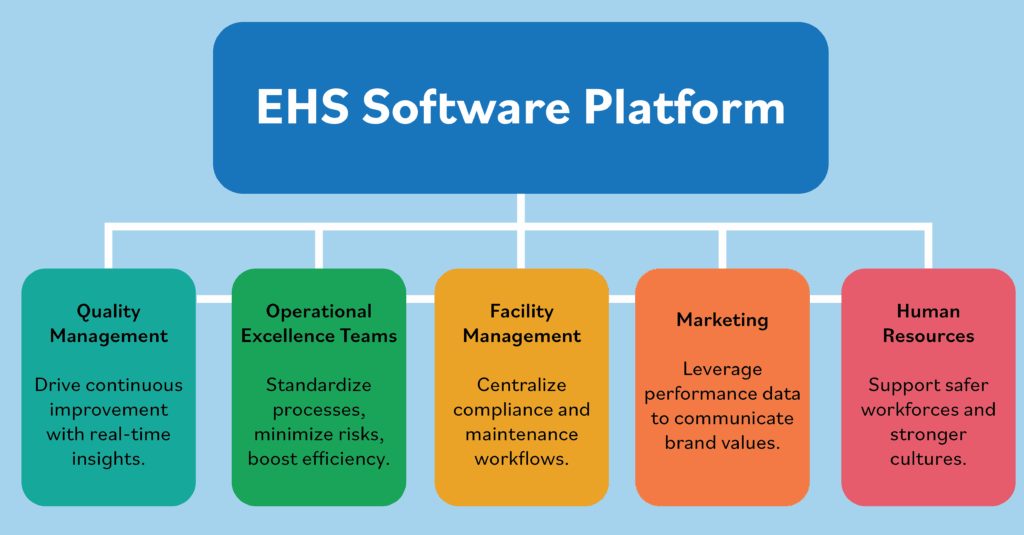
Highlighting these cross-functional benefits accomplishes two things:
- It shows that the investment can help the whole organization, making your case stronger.
- It shows that you are thinking beyond your own department, which senior leaders appreciate when they are looking for ways to improve efficiency across the company.
Strategy 5: Ground soft ROI in hard realities where possible
While this article focuses on soft ROI, the most compelling business cases find opportunities to connect qualitative benefits to quantitative outcomes wherever possible. Even if you can’t calculate a precise dollar figure, you can often estimate the order of magnitude of certain benefits.
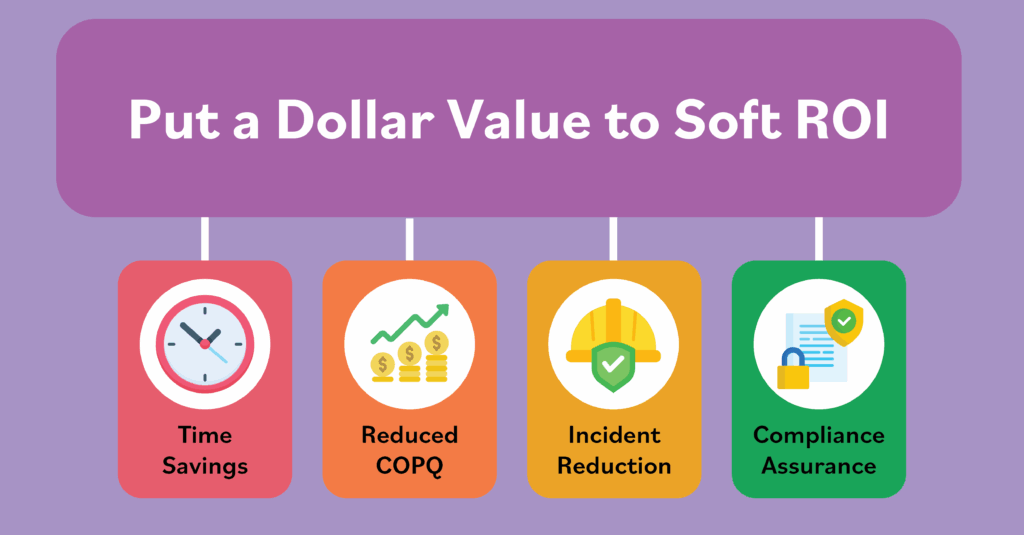
Identify potential hard dollar connections
Look for opportunities to attach numbers to the problems being addressed:
- Time savings: If your team spends 10 hours per week on manual report compilation, and that time could be reduced by 80% through automation, you could free up 400+ hours per year for strategic work. What’s the value of a full quarter of additional strategic capacity?
- Incident reduction: If better corrective action management could prevent even one recordable injury per year, what’s the direct cost savings from reduced workers’ compensation claims, regulatory fines, and incident investigation time? Use our incident management calculator to help.
- Compliance assurance: What would it cost the organization if a regulatory inspection resulted in operational citations or facility shutdowns? Even a small reduction in that risk has significant expected value.
These numbers might not count as traditional hard ROI, but they give clear examples that help stakeholders understand the size of the opportunity. They turn ideas like “improved efficiency” or “better compliance” into real results for the organization.
Bringing it all together
To make a strong business case for EHS software based on soft ROI, you need to change how you talk to stakeholders. Instead of apologizing for not having exact numbers, clearly explain the strategic value that comes from:
- Eliminating inefficiency that consumes our team’s capacity
- Unlocking time and energy for high-impact strategic work
- Creating visibility into compliance standing and reducing enterprise risk
- Enabling cross-functional benefits that extend beyond EHS
- Preventing costly incidents and compliance failures before they occur
The truth is, some of the most important results are hard to measure. Creating a strong safety culture, building systems that prevent problems, and making room for innovation and improvement are all key to organizational success. These are real and valuable returns on investment.
When you show stakeholders how EHS software makes these results possible, you help them see that its value goes far beyond just saving money. You present EHS as a key part of building a stronger, more successful, and more competitive organization.
If you’re building a business case for EHS software, don’t shy away from soft ROI. Embrace it.
Use these strategies to help your stakeholders see what you see: that the right technology doesn’t just make your job easier, it makes your entire organization stronger, safer, and more capable of achieving its mission.
At Intelex, we’ve helped hundreds of EHS leaders use soft ROI to build undeniable business cases. If you’re ready to show your CFO the value of EHS software, let’s talk about how we can help.


